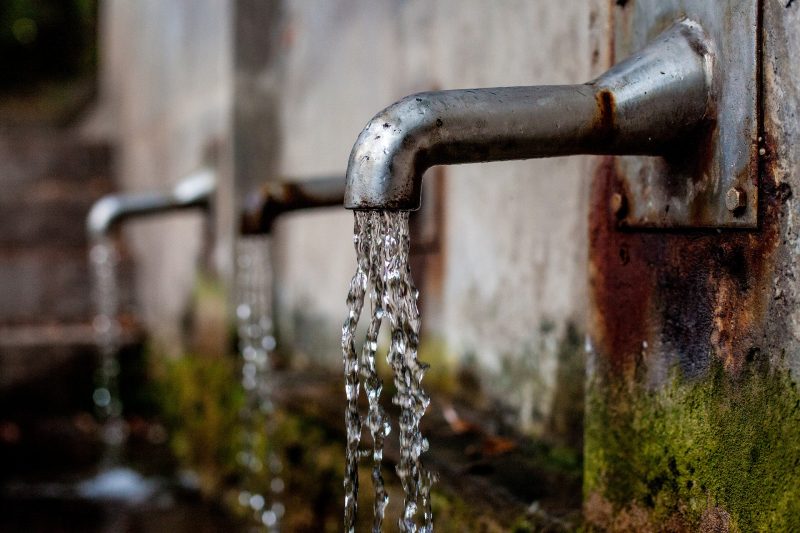The newly passed Infrastructure Investment and Jobs Act (H.R. 3684) is a significant investment in not only our nation’s infrastructure, but also our nation’s long-term sustainability. Now that the bill has been signed into law, it provides the largest federal investment in water infrastructure seen in a generation. It contains programs that aim towards improving the long-term resilience of water systems, addressing the growing consequences of climate change, dedicating funds towards major public health concerns such as lead pipes and PFAS contamination, and supporting the Clean Water and Drinking Water State Revolving Funds (SRFs) with funds over the next five years.
H.R. 3684 includes an unprecedented $82.5 billion investment in the country’s aging water infrastructure and other resilience related projects. It is important for utilities to plan how these monies can be used in a way that will be most beneficial to their operations. This blog will highlight the water related investments and how utilities can get the most out of their funds.
Highlights
- A majority of the water infrastructure funds will support improvements in safe drinking water and sanitation, with over $24 billion in grants allocated directly to states over the next five years.
- The EPA will receive $48.4 billion in Safe Drinking Water and Contaminants Grants to be used for Clean Water State Revolving funds and Drinking Water State Revolving Funds. Of those funds, $15 billion is allocated to replace lead pipes and service lines across the country. An additional $9 billion will address unregulated pollutants such as perfluoroalkyl and polyfluoroalkyl substances (PFAS) and other emerging contaminants.
- The EPA will also receive $2.76 billion towards the Safe Drinking Water Act and Federal Water Pollution Control act.
Long-Term Water Resilience
One major difference in this Act from previous similar legislation is a shift towards long-term water resilience. Historically, federal legislation focused on the construction of dams and water diversion projects. This Act still includes investments in dams and other grey infrastructure projects but also funds nature-based solutions, such as the $2.78 billion allocated to NOAA for ecosystem restoration and environmental resilience programs. The Natural Resources Conservation Service will receive $918 million for watershed programs and the US Army Corps of Engineers will receive $11.6 billion for expanding inland waterways, rehabilitating harbors, and supporting inland flood management projects. Another $5.484 billion will support Mississippi River and Tributary projects, including their associated operations and maintenance costs, over a three-year period.
Other investments include replacing water infrastructure such as dams with $8.35 billion designated for the Bureau of Reclamation. $250 million will go to the Bureau of Indian Affairs for their own construction, repair, improvement, maintenance of irritation and power systems, dams, sanitation, and other facilities, and the Great Lakes Restoration Initiative will receive $1.95 billion from the Environmental Protection Agency.
What needs to be done now?
Since the funds are already allocated, they should be distributed to the states quickly. Cities, counties, and water utilities will be the primary partners in executing the bill’s provisions. However, fast timelines come with unique challenges that local governments and utilities are less prepared to manage, such as workforce and materials shortages. Planning ahead can minimize these potential issues so when funding reaches the state level, they can hit the ground running and maximize the impact of those dollars. It is also important for utilities to analyze their current financial situation, assess assets and reach out to organizations that can help. The Environmental Finance Center at UNC is a great resource for technical analysis and guidance on what types of projects may be the most beneficial for a utility.
Please stay tuned for future updates. In the meantime, check out these great overviews:



4 Responses to “Important Water Investments Within the Infrastructure Investment and Jobs Act”
Sara
Interest read, thanks for sharing this!
primavera p6
It goes without saying that you will encounter one or the other. The advantage of project management is that it aids in earlier identification.
Dorice Madronero
Is federal funding available to private water utilities, particularly if the company owns the land and pipes and pumps used to distribute to customers?
imimani
Hi Dorice. Most state SRF programs allow small non-profits to apply, but most states don’t allow for-profit water companies to apply. However, it can vary state by state.
Best,
Imani Russell, Research Assistant